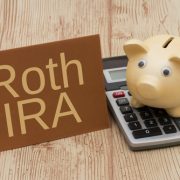Self-Directed IRA vs. Traditional IRA
What happens when you have to decide between a Self-Directed IRA and a Traditional IRA? Well, you’d be surprised. The answer isn’t necessarily as straightforward as you might think. But the good news is, it doesn’t have to be complicated either. In using a Self-Directed IRA, you can exercise a lot of control in your retirement planning—but it does require working with a Self-Directed IRA custodian who can facilitate the kinds of choices you’d like to make. How does it all work, and how does it contrast with the traditional approach? Here’s what you’ll need to know.
A Traditional IRA vs. a “Traditional” IRA
For starters, we have to be clear about what we mean when we refer to a Traditional IRA. There is a Traditional IRA account, which is a specific type of retirement account with its unique set of rules. Then there is the “traditional” style of IRA investing, which can refer generically to using IRAs without using self-direction. In this article, we’ll use the latter. We’re talking about self-direction vs. the traditional way of establishing an account.
In that sense, a Self-Directed IRA is easy to contrast with this traditional method of doing things. With a Self-Directed IRA, you’ll set up your account through a Self-Directed IRA administration firm like American IRA. You can then work through us, issuing buy or sell orders to us, which we would then execute on behalf of the IRA. With self-direction, you can actually use all sorts of different types of retirement accounts, from Roth IRAs to Traditional IRAs. It’s the style of using these accounts that makes it self-directed, putting more hands in control of the IRA’s owner.
Why Do People Use Self-Directed IRAs?
You might wonder about the appeals of Self-Directed IRAs. There’s no single answer to this. Instead, people who self-direct an account do it because of a myriad of benefits, including:
- Tax benefits. The most obvious of the benefits, an IRA has obvious tax benefits that can include tax-deferred growth or even tax-free growth, in the case of Roth IRAs. With a Self-Directed IRA, the possibility of using alternative asset classes like real estate with these benefits creates added incentives for investors.
- Diversification. Because a Self-Directed IRA can include real estate, precious metals, and other non-traditional asset classes administrated by the custodian on the account, investors can build a diversified retirement portfolio that can spread around risk, which helps prevent panicking during stock market crashes.
- Ease of use. The convenience of working with a Self-Directed IRA custodian means they can handle many of the most cumbersome aspects of running the account, especially when it comes to handling paperwork or issues like precious metal storage. This means that investors can focus on the overall allocation of the account while the custodian handles some of the minor details.
Is it Time for a Self-Directed IRA?
A Self-Directed IRA may not be for everyone, but just as often, many investors might not know how much it might fit with their vision for retirement. The benefits, strategies, and advantages possible with a Self-Directed IRA are many. It’s up for the investor to realize this and consider opening one of their own. That way, they can have access to a whole new world of retirement investing. But how does it all work? And how does one get started? There are all sorts of things to learn about Self-Directed IRAs and the traditional way of doing things.
Interested in learning more about Self-Directed IRAs? Contact American IRA, LLC at 866-7500-IRA (472) for a free consultation. Download our free guides or visit us online at www.AmericanIRA.com.









